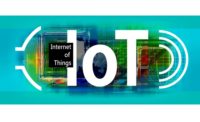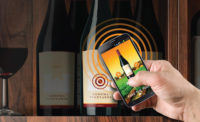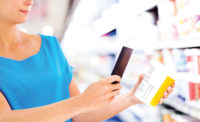Smart Labels: The Next Big Thing in IoT and Packaging

A smart label is an extremely flat item identification slip that is more informative than a barcode. Smart labels include QR codes, Electronic Article Surveillance (EAS) tags and specially configured RFID tags. The smart labels are created by combining three technologies: plain text, radio code and optical character recognition. Smart labels are divided into chip labels, printable labels and electronic label due to their different applications. However, the use of smart labels has evolved and can be used to recognize stale food in the refrigerator. Due to the instant access to the information, several industries have adopted smart labels, especially in food and beverages market. Thus, the smart labels market has seen an exponential growth. Moreover, according to Allied Market Research (alliedmarketresearch.com/smart-labels-market), the smart labels market is estimated to register 16.6 percent between 2017–2023.
Source of Power for IoT Technology
IoT is not restricted to silicon-based sensors; it includes those sensors also that are found in the tracking data on medical devices, airplane engines, and other internet-connected devices. The silicon-based sensors cannot be used for cost-sensitive items or in bendable packaging. To overcome these limitations, ThinFilm (thinfilmnfc.com) offered a solution of printable electronics. It developed a technology that can be printed on smart labels at an extremely low cost compared to silicon-based sensors. Moreover, the technology can be attached to a variety of packages that are hard to track in real time. Smart labels technology is recently emerged technology and is limited to the amount of memory it can hold. For now, it fulfills the requirement of tracking objects remotely, effectively, and most importantly at an affordable price.
The applications of smart labels are limitless. In healthcare sector, the smart labels can track the inventory and disposal of pharmaceutical. Moreover, several companies are now attaching smart labels to clothes, where the labels can monitor body temperature, and to adult diapers, which help a patient’s caretaker. Several logistics companies have attached a radio-frequency identification (RFID) tag to shipping crates that transport perishable materials such as meat, yogurt or other foods. Using smart labels, a small, single product can also be tracked, allowing companies to monitor the product instead of the shipping container.
Elizabeth Sinclair, the manager of marketing at Seagull Scientific (seagullscientific.com), a manufacturer of smart labels said, “The idea of the Internet of Things (IoT) being able to connect devices and information by encoding readers, objects and information is now advancing to where the appliances in your kitchen can talk to each other. A consumer can hold his or her smartphone to a refrigerator to troubleshoot a mechanical problem, so to take this one step further—what if you could obtain information about the food items in your refrigerator that would inform you about food freshness or a food recall on an item?” She added that to reap the benefits of the smart labels technologies, companies must invest in it and hire professional employees to understand the science behind the it. This is the era of IoT and smart labels, companies must get used to the developing technology.
Making Daily Processes Smarter
A global supplier of pressure sensitive label materials, UPM Raflatac (upmraflatac.com), recently added a solution to the smart labels, RafMore, that informs customers whether the waste is ready to be collected or not. When the smart labels are added to the recycling containers and scanned by the mobile application it gives information about the date and time on which the garbage will get collected. RafMore was tested on various customers in Denmark and Sweden. Previously, the waste collection was done manually, which required frequent communication with customers. However, the new technology has made the process smarter. Another advantage of smart labels is in determining whether the food stored in the refrigerated is fresh or not. A team of researchers has developed a new sensor that contains nanostructures. The sensor changes color when they come in contact spoiled or contaminated food products. Thus, the sensor can directly be applied to the samples.
Researchers have published a paper, titled, “Portable ceria nanoparticle-based assay for rapid detection of food antioxidants.” According to the researchers, apart from deciding whether or not the food is ruined, the sensor can also be used to identify new medicinal plants and natural sources of antioxidant in remote locations such as Amazon forest. Such technologies prove that sensors can be developed in all sizes and shapes, and the traditional silicon-based sensor may fulfill the wishes of customers, but if integrated with IoT, smart labels have unbounded applications in sensor technology. These printed sensors are affordable and a smart alternative that possess the power to change the landscape of the Internet of Things.
Looking for a reprint of this article?
From high-res PDFs to custom plaques, order your copy today!






